The latest details about Russia’s attack on Ukraine:
Congress increases proposed aid for Ukraine in government-wide spending bill
9:10 p.m. EST March 8
A U.S. aid package for Ukraine and its Eastern European allies grew to around $14 billion on Tuesday as lawmakers put finishing touches on a $1.5 trillion government-wide spending bill that leaders hope Congress will enact by week’s end.
Democrats and Republicans rallied solidly behind the Ukraine aid, with Russia’s attack devastating parts of the country and prompting Europe’s worst refugee crisis since World War II. Negotiators said the package of military, humanitarian and economic aid to the region had grown close to $14 billion, up from $12 billion just Monday and President Joe Biden’s $10 billion request last week.
“We’re going to support them against tyranny, oppression, violent acts of subjugation,” Biden said at the White House.
The bipartisan rallying behind the Ukraine aid package was just one manifestation of Congress’ eagerness to help that country, but not all of it has been harmonious.
RELATED
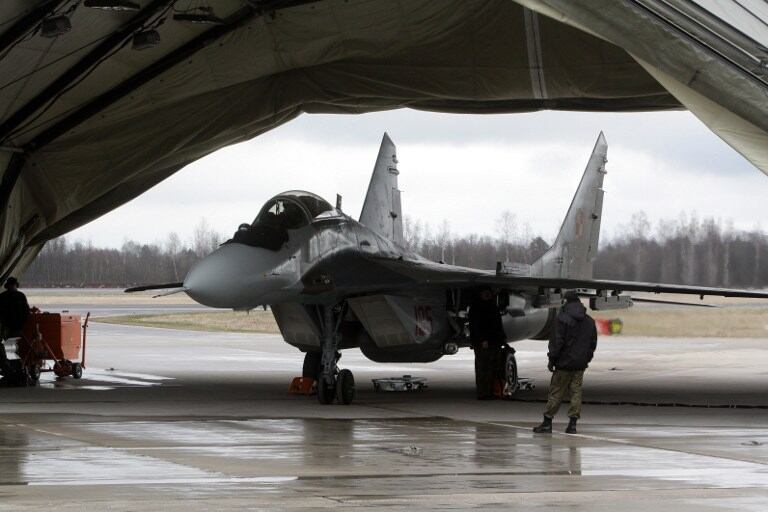
Republicans accused Biden of moving too slowly to help Ukraine and NATO nations assisting it, and to impose sanctions against Russia and its president, Vladimir Putin. Democrats say time was needed to bring along European allies that rely heavily on Russian energy sources. And a bipartisan push to ban Russian oil imports had grown perhaps unstoppable before Biden announced Tuesday that he would do that on his own.
By dinner time Tuesday, lawmakers had still not released the overall bill, which would finance federal agencies this year and include the Ukraine aid. But details of the sweeping bill were beginning to emerge and its passage, probably in coming days, was not in doubt.
“War in Europe has focused the energies of Congress to getting something done and getting it done fast,” said Senate Majority Leader Chuck Schumer, D-N.Y.

Lawmakers had other motivations to approve the $1.5 trillion bill as well. Failure to do so by Saturday would prompt an election-year shutdown of federal agencies, a damaging blow that lawmakers were eager to avoid. And the legislation contained wins for both parties.
Democrats won around $15 billion for a fresh round of spending for vaccines, testing and treatments for COVID-19, including $5 billion for fighting the pandemic around the world. That was below Biden’s $22.5 billion request.
Republicans said they’d forced Democrats to pay for the entire amount by pulling back unspent money from past legislation. The money would come from previously approved spending for combating COVID and for helping states cope with pandemic costs, said one person who spoke on condition of anonymity because they weren’t authorized to discuss the legislation publicly.
Schumer said there would be money for Biden’s “Cancer Moonshot” to find a cure for the disease and for increasing Pell grants for lower-income college students. Still unresolved was whether to include programs protecting women against domestic violence and strengthening the country’s cybersecurity, Schumer said.
The overall measure was on track to increase overall defense and domestic spending over last year’s levels, though exact figures were not yet available. No. 2 Senate GOP leader John Thune of South Dakota said Republicans were happy with the boost for the military.
Senate Minority Leader Mitch McConnell, R-Ky., said the measure would provide loan guarantees to Poland to help it replace aircraft it is sending Ukraine. “It’s been like pulling teeth” to get Democrats to agree to some of the defense spending, he said. But he added, “It’s an important step. It needs to be passed. It needs to be passed quickly.”
Sen. Ben Cardin, D-Md., a sponsor of a bipartisan effort to win billions to help the pandemic-battered restaurant industry, said that initiative had not survived due to GOP opposition.
House leaders were hoping that chamber could approve the legislation on Wednesday, sending it to the Senate. Debate there could last days.
Top House Democrats were warning their members they might have to unexpectedly return to Washington on Friday night from the party’s political retreat in Philadelphia to approve the package or pass yet another short-term bill preventing a federal shutdown. Temporary financing for federal agencies expires at the end of the day Friday.
The timing on final passage, though likely within days, was unclear. Last week, eight conservative Republican senators wrote Schumer saying lawmakers “should not vote on it” until they’ve had time to read the bill and for a full study of its costs by the nonpartisan Congress Budget Office.
“There are some senators who won’t agree on anything, anytime, anywhere,” said No. 2 House Democratic leader Steny Hoyer, D-Md., “which is frustrating.”
With convoy slowed, Russians are trying another route
1:53 p.m. EST March 8
Russian forces have opened up a new line of advance toward Kyiv, a senior U.S. defense official told reporters on Tuesday.
“Just to the north of Sumy, there’s been a Russian advance from the northeast ... skirting Chernihiv and skirting Kharkiv and kind of moving on Kyiv from that direction,” the official said. “And we estimate that they’re about 60 kilometers or so from the city, so they’re still farther away than the main advance coming down on the north.”
The northern advance is still stalled, the official said. Despite reports of “isolated fighting” within the city, he added, the Defense Department assesses that the main column pointed toward Kyiv has not advanced beyond the airport in Hostomel, about 30 kilometers outside downtown Kyiv.
From the south, Russian troops are about 40 kilometers outside Mykolayiv, where bombing “is obviously picking up again,” the official said.
Most of the more than 600 Russian missiles launched to date were fired from Russia or inside Ukraine, the official said, pushing back on the idea that a no-fly zone above the country would stem Russia’s bombardment.
“And I think it’s just important to remind that nearly all of the country in Ukraine is in some way or another under the umbrella of Russia’s surface-to-air missile capabilities,” the official said, meaning that any NATO patrols to enforce a no-fly zone would be vulnerable to missile attacks.
A no-fly zone would also prevent Ukraine from fighting Russia in the air, which they’re still able to do, the official said.
The official could not confirm reports that Russian army Maj. Gen. Vitaly Gerasimov had been killed outside Kharkiv, nor whether he had any family ties to Valery Gerasimov, the Russian armed forces chief of staff.
RELATED
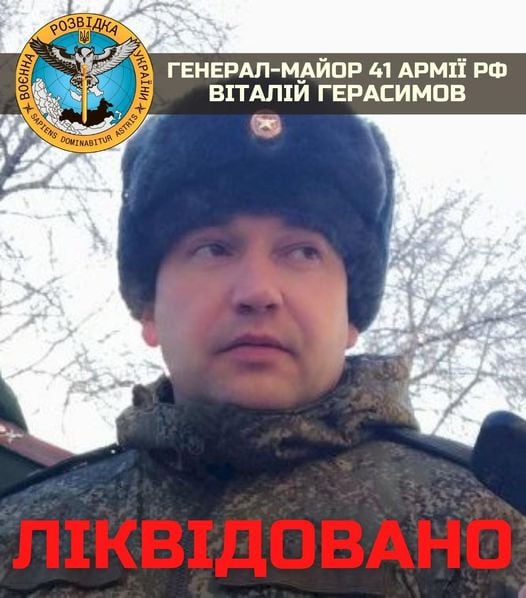
The U.S. has made a handful of calls on a deconfliction line set up with Russia last week, the official said.
“And so since it’s been established, I think there’s been about a dozen calls with the Russians,” he said. “Really, again, administrative in nature, just to make the phone call, see if somebody’s picking up on the other end.”
Asked whether the U.S. can do anything to stop bombing of evacuation routes, the official said, after reports that Russian officials had encouraged Ukrainians to use them despite continued attacks.
“We certainly would like to see humanitarian corridors continue to be established and observed, so that innocent people can find their way to safety,” he said. “I know that’s not a great answer, but we’re not involved in negotiating these corridors. And so it’s really about the best we can do right now.”
-Meghann Myers, Military Times
Rescue efforts in Mariupol jeopardized
11:54 a.m. EST March 8
An attempt to evacuate civilians from the bombarded port of Mariupol and deliver food, water and medicine was thrown into jeopardy Tuesday by what Ukraine said was continued shelling by Russian forces as conditions inside the strategic city of 430,000 grew more desperate.
Corpses littered the streets of Mariupol, where besieged residents have increasingly turned to breaking into stores to try to feed themselves. People got water from streams or by melting snow.
Europe’s worst refugee crisis since World War II grew even more severe, with U.N. officials reporting that 2 million people have now fled Ukraine.
Moscow’s forces have laid siege to Ukrainian cities and cut off food, water, heat and medicine in a growing humanitarian disaster. But for days, attempts to create corridors to safely evacuate civilians have stumbled amid continuing fighting and objections to the proposed routes.
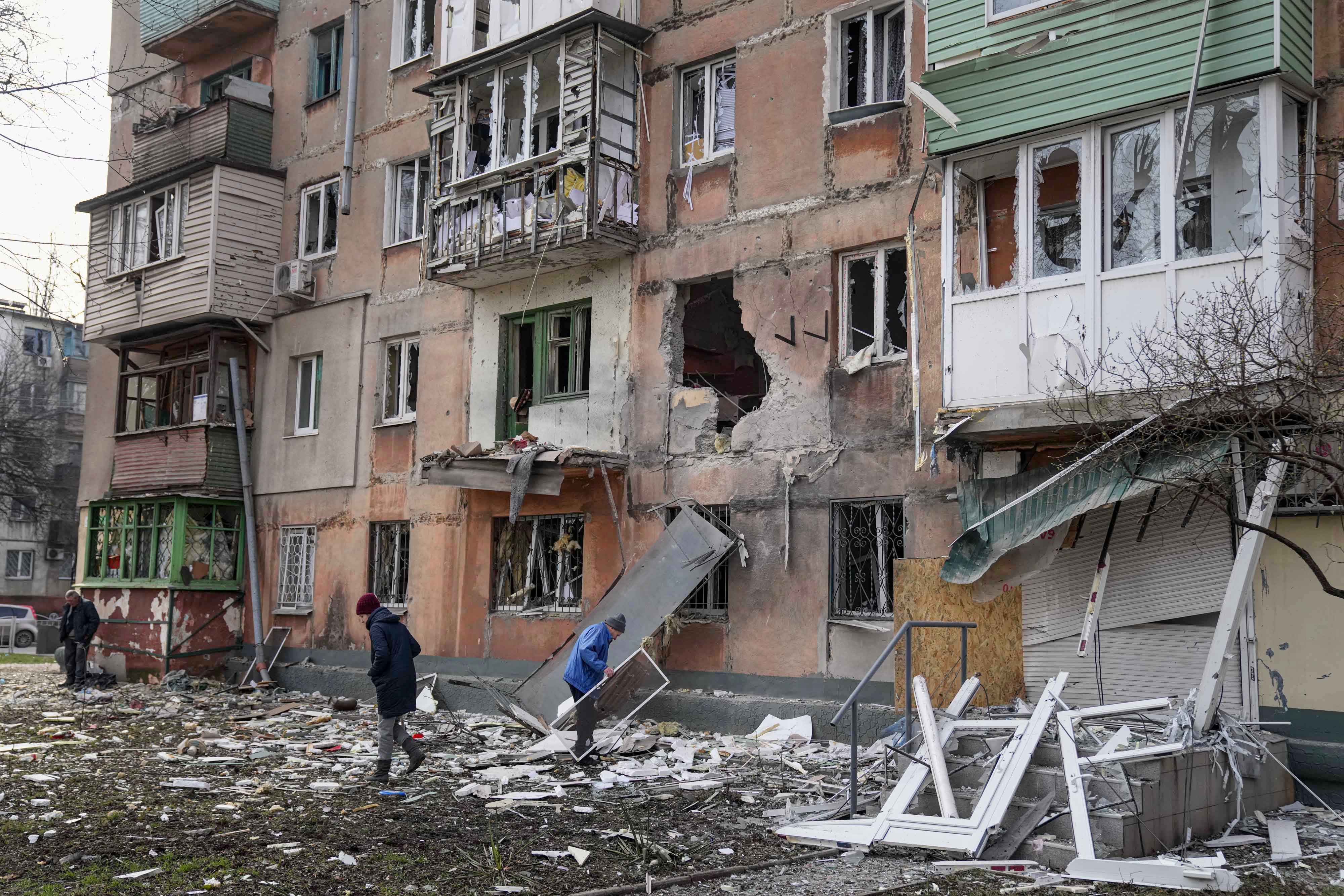
One evacuation attempt Tuesday did appear at least partially successful: A convoy of buses packed with people fleeing the fighting moved along a snowy road from Sumy, a northeastern city of a quarter-million people, according to video from the Ukrainian communications agency.
The Russian military said 723 people were evacuated from Sumy to the Ukrainian city of Poltava. It identified them as mostly citizens of India, with the rest from China, Jordan and Tunisia. It made no mention of any Ukrainians among those evacuated.
Hours before the convoy reached Sumy, overnight strikes killed 21 people there, including two children, Ukrainian authorities said.
Ukrainian officials also said a safe corridor had been opened from the embattled town of Irpin, outside Kyiv, but it was not clear for how long it remained open and how many people used it
Meanwhile, buses emblazoned with red cross symbols carried water, medicine and food toward an encircled Mariupol, scene of some of the worst desperation. Vereshchuk said the vehicles would then ferry civilians out of the southern city, situated on the Sea of Azov, which opens onto the Black Sea.
But soon after officials announced that buses were on their way, Ukrainian authorities said they had learned of shelling on the escape route.
It was unclear whether the supply convoy made it to Mariupol. And it appeared unlikely that civilians would be able to board the buses to get out.
The deputy mayor of Mariupol told the BBC that Russian forces continued to pound areas where people were trying to gather ahead of being taken out. He said some roads were blocked, while others were mined.
“So we cannot establish a sustainable cease-fire and safety route at the moment,″ Serhiy Orlov said. “So we still have ... a city in blockade.’’
The city is without water, heat, working sewage systems or phone service. Authorities planned to start digging mass graves for all the dead.
With the electricity out, many people are relying on their car radios for information, picking up news from stations broadcast from areas controlled by Russian forces or Russian-backed separatists.
Theft has become widespread for food, clothes, even furniture, with locals referring to the practice as “getting a discount.”
Ludmila Amelkina walked along an alley strewn with rubble, with walls pocked by gunfire, as she described the destruction inside the city and the conditions residents faced.
“We don’t have electricity, we don’t have anything to eat, we don’t have medicine. We’ve got nothing,” she said.
The exact status of the humanitarian corridors was not clear. The Russian military said it proposed safe corridors from Kyiv, Chernihiv, Sumy, Kharkiv and Mariupol — two for each city, one leading toward Russia and the other toward the West.
It said that the Ukrainian side accepted only one of those 10 corridors — the one leading from Sumy to Poltava. Ukrainian officials have rejected the idea of sending civilians to Russia, but there was no immediate word on whether they had turned down those other corridors.
Nearly two weeks into the fighting, Russian forces have captured a swath of southern and coastal Ukraine in an apparent bid to cut off the country’s access to the sea. But they have seen their advances stopped in many areas — including around Kyiv, the capital — by nimble Ukrainian fighters targeting Moscow’s armored columns.
Thousands of people are thought to have been killed, both civilians and soldiers, though the actual number remains unknown.
Russians targeting escaping civilians, NATO secretary general says
10:12 a.m. EST March 8
NATO Secretary General Jens Stoltenberg on Tuesday said there are “credible reports” of Russian forces committing war crimes in ongoings attack on Ukraine by firing on fleeing civilians.
“There are credible reports of civilians coming under fire as they tried to evacuate,” said Stoltenberg, speaking to reporters after a meeting with Latvian President Egils Levits, at the Riga Castle in Latvia. “Targeting civilians is a war crime. And it’s totally unacceptable. We need real humanitarian corridors that are fully respected.”
Stoltenberg’s statements come as evacuation efforts are underway in Mariupol and Sumy and as some 2 million Ukrainians have fled since the war began Jan. 24.

“We just had an important discussion about the Russia’s brutal invasion of Ukraine and the implications for our security. The Ukrainian people and armed forces have inspired the world with their courage. But President Putin’s assault continues and the humanitarian impact is devastating.
Many civilians have been killed or wounded, and 2 million people have fled the Ukraine.”
The Russian onslaught has trapped people inside besieged cities that are running low on food, water and medicine amid the biggest ground war in Europe since World War II.
Previous attempts to lead civilians to safety have crumbled with renewed attacks. But on Tuesday, video posted by Ukrainian officials showed buses packed with people moving along a snowy road from the eastern city of Sumy and others leaving the besieged southern port of Mariupol.
-Howard Altman, Military Times
Russian attacks kill nearly 500 civilians, injure nearly 900, toll much higher: UN
9:02 a.m. EST March 8
The U.N. human rights office says it has confirmed 474 civilian deaths in Ukraine since the Russian invasion began on Feb. 24.
The office said Tuesday that the number of confirmed civilian injuries now stands at 861.
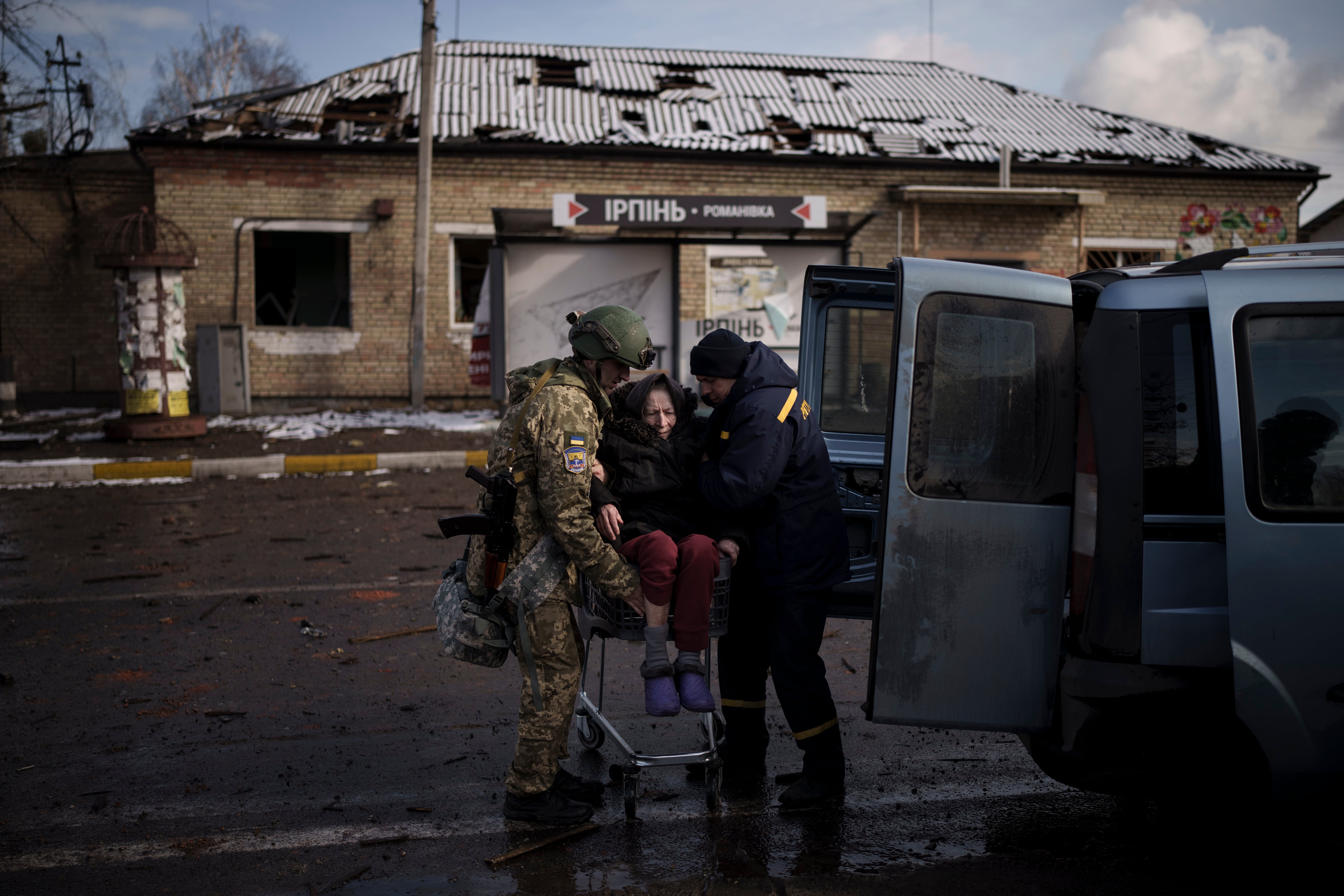
The U.N. office uses strict methodology and only reports casualties it has been able to verify.
It acknowledges that the real figures are much higher, in part because intense fighting has delayed its receipt of information and many reports still have to be corroborated.
-The Associated Press
Civilians make their escape
5:41 a.m. EST March 8
Buses packed with people fleeing the Russian invasion in Ukraine left two embattled cities along safe corridors Tuesday, while officials said the exodus of refugees from the country reached 2 million.
The Russian onslaught has trapped people inside besieged cities that are running low on food, water and medicine amid the biggest ground war in Europe since World War II.
Previous attempts to lead civilians to safety have crumbled with renewed attacks. But on Tuesday, video posted by Ukrainian officials showed buses packed with people moving along a snowy road from the eastern city of Sumy and others leaving the besieged southern port of Mariupol.
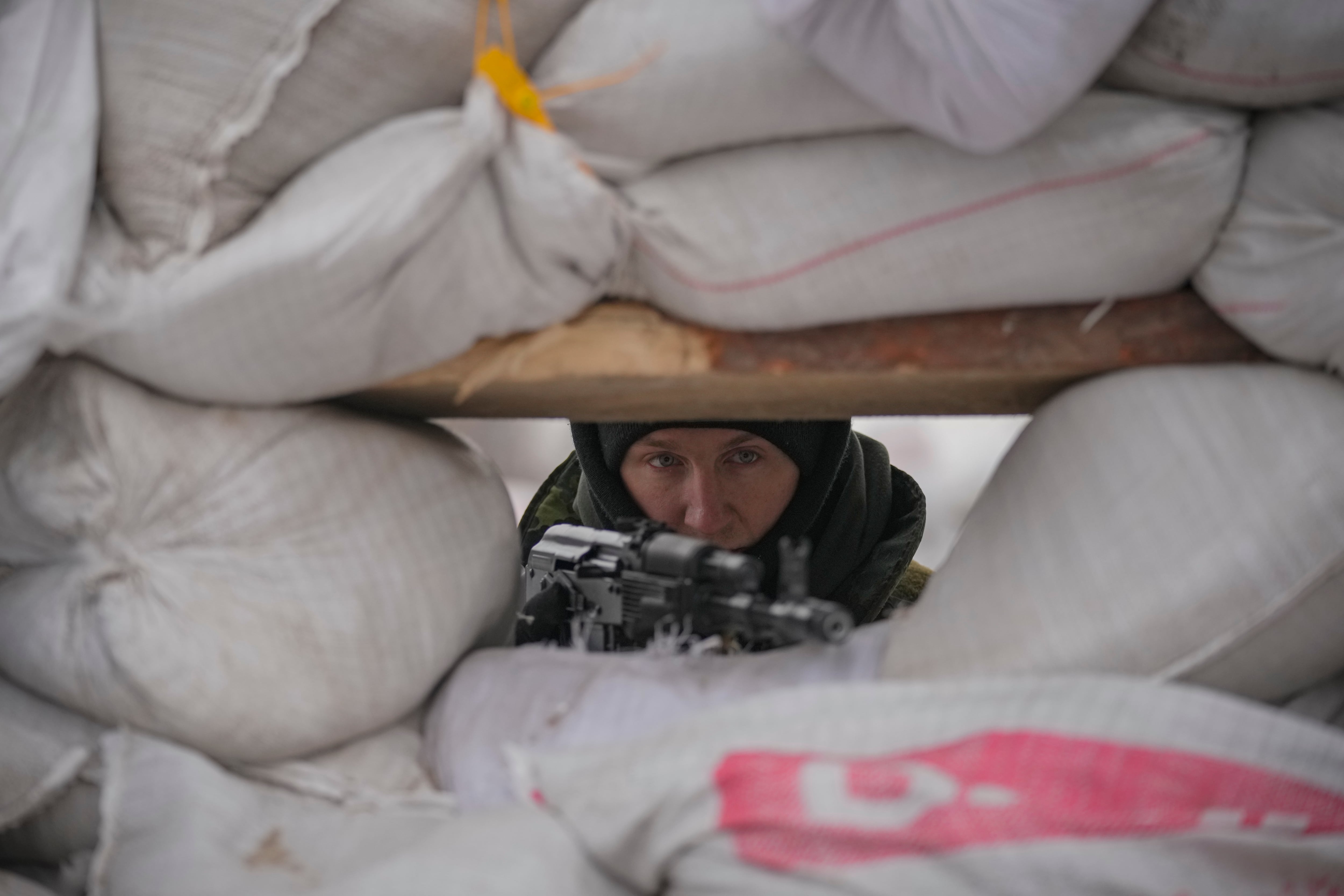
It was not clear how long the effort would last.
“The Ukrainian city of Sumy was given a green corridor, the first stage of evacuation began,” the Ukrainian state communications agency tweeted.
Those buses are headed to other cities in Ukraine, but many people have chosen to flee the country instead. Safa Msehli, a spokesperson for the U.N.’s International Organization for Migration, tweeted that 2 million have now fled the country, including at least 100,000 people who are not Ukrainian.
RELATED
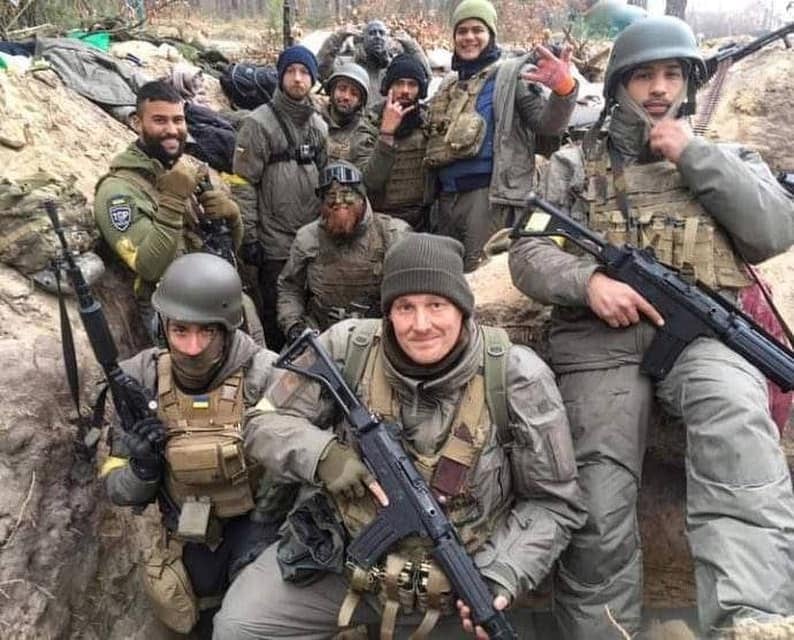
With the invasion well into its second week, Russian troops have made significant advances in southern Ukraine but stalled in some other regions. Ukrainian soldiers and volunteers fortified the capital, Kyiv, with hundreds of checkpoints and barricades designed to thwart a takeover. A steady rain of shells and rockets fell on other population centers, including the Kyiv suburb of Bucha, where the mayor reported heavy artillery fire.
“We can’t even gather up the bodies because the shelling from heavy weapons doesn’t stop day or night,” Mayor Anatol Fedoruk said. “Dogs are pulling apart the bodies on the city streets. It’s a nightmare.”
In one of the most desperate cities, Mariupol, an estimated 200,000 people — nearly half the population of 430,000 — hoped to flee.
Russia’s coordination center for humanitarian efforts in Ukraine and Ukrainian Deputy Prime Minister Iryna Vereshchuk both said a cease-fire was agreed to start Tuesday morning to allow some civilians to evacuate, but it was not clear where all the corridors would lead to, amid disagreement between the two sides.
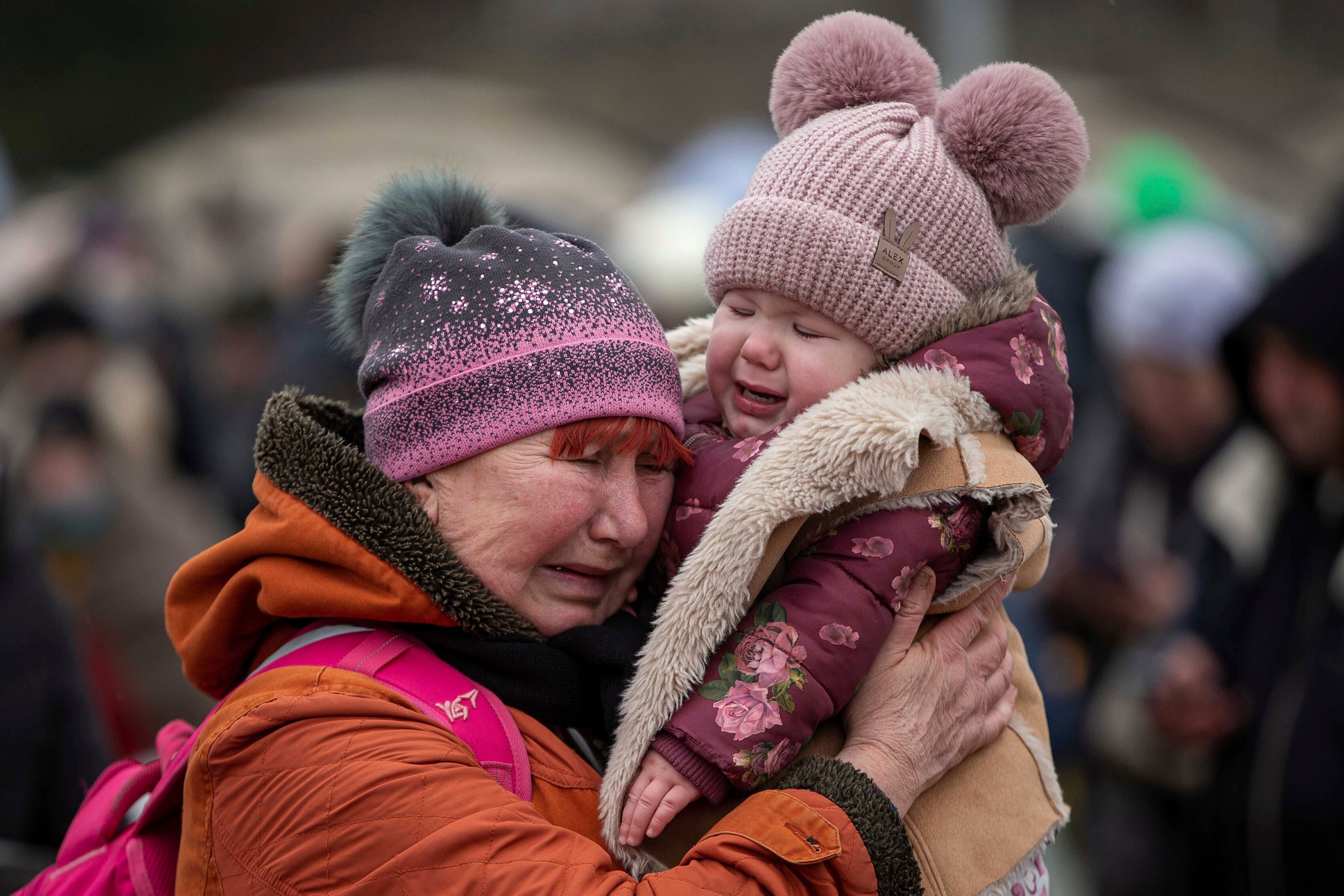
Russia’s coordination center suggested there would be more than one corridor, but that most would lead to Russia, either directly or through Belarus. At the U.N., however, the Russian ambassador suggested corridors from several cities could be opened and people could choose for themselves which direction they would take.
Vereshchuk, meanwhile, only said that the two sides had agreed to an evacuation of civilians from the eastern city of Sumy, toward the Ukrainian city of Poltava. Those to be evacuated include foreign students from India and China, she said.
She reiterated that proposals to evacuate civilians to Russia and its ally Belarus, which was a launch pad for the invasion, were unacceptable.
RELATED
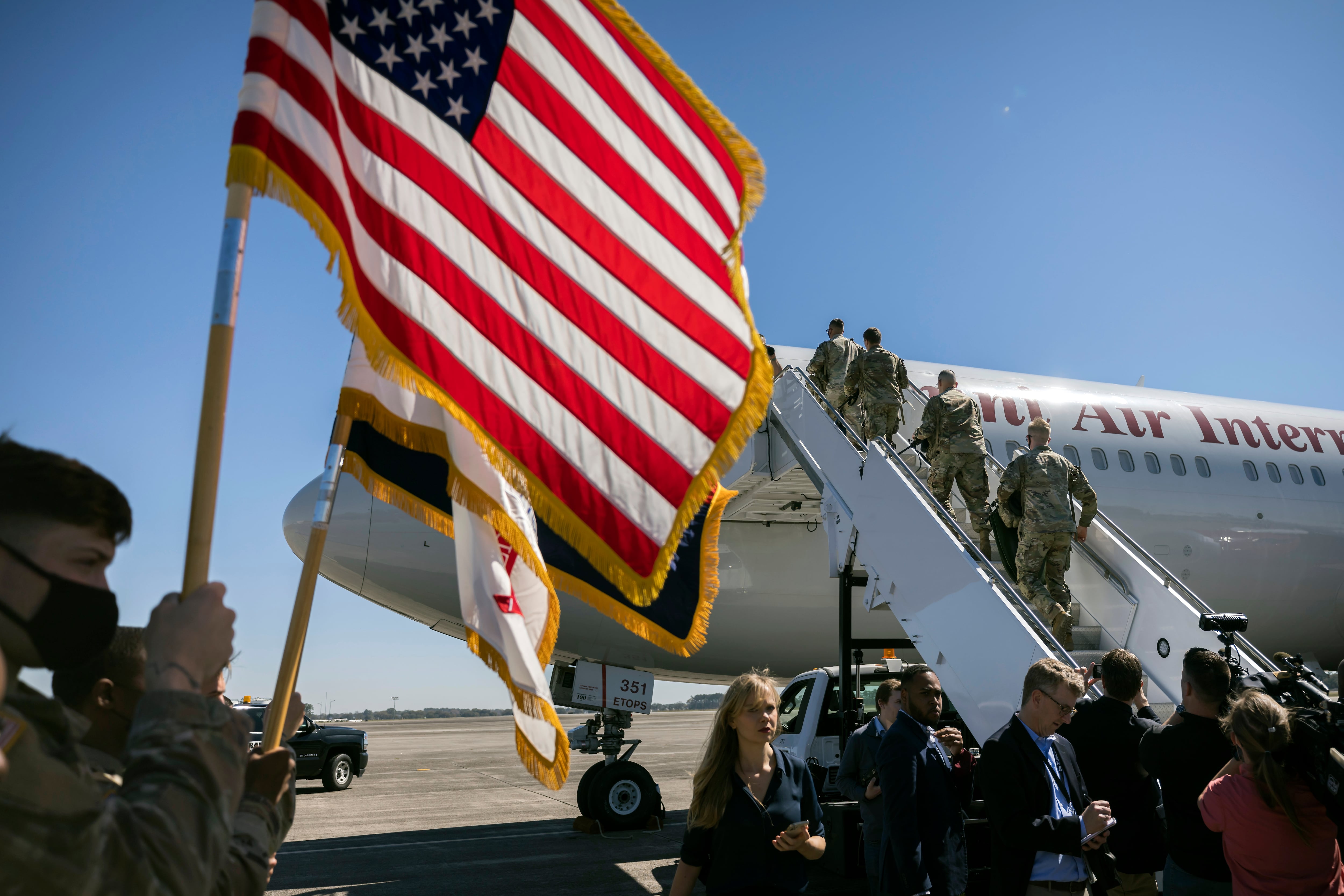
Later, Ukrainian presidential aide Kyrylo Tymoshenko posted a video of yellow buses with a red cross plastered on the side that he said showed evacuations from Mariupol toward the city of Zaporizhzhia. He said that humanitarian aid was also being sent in to Mariupol.
Demands for effective passageways have surged amid intensifying shelling by Russian forces. The steady bombardments, including in some of Ukraine’s most populated regions, have yielded a humanitarian crisis of diminishing food, water and medical supplies.
Through it all, Ukrainian President Volodymyr Zelenskyy said Ukrainian forces were showing unprecedented courage.
“The problem is that for one soldier of Ukraine, we have 10 Russian soldiers, and for one Ukrainian tank, we have 50 Russian tanks,” Zelenskyy told ABC News in an interview that aired Monday night. But he noted that the gap in strength was closing and that even if Russian forces “come into all our cities,” they will be met with an insurgency.
A top U.S. official said multiple countries were discussing whether to provide the warplanes that Zelenskyy has been pleading for.
The besieged city of Mariupol was short on water, food and power, and cellphone networks are down. Stores have been looted as residents search for essential goods. Police moved through the city, advising people to remain in shelters until they heard official messages broadcast over loudspeakers to evacuate.
Hospitals in Mariupol are facing severe shortages of antibiotics and painkillers, and doctors performed some emergency procedures without them.
The lack of phone service left anxious citizens approaching strangers to ask if they knew relatives living in other parts of the city and whether they were safe.
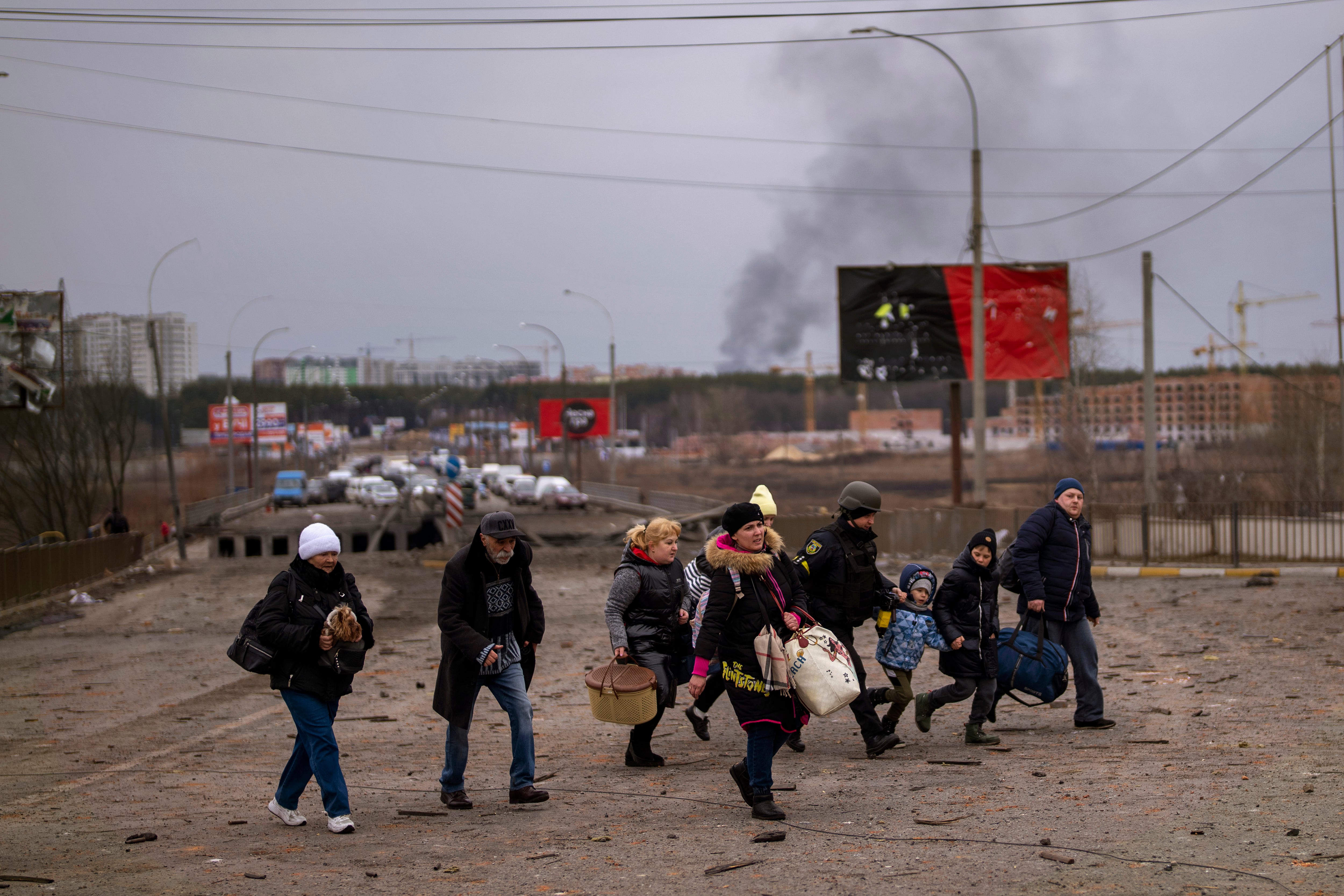
The battle for Mariupol is crucial because its capture could allow Moscow to establish a land corridor to Crimea, which Russia seized from Ukraine in 2014.
Several hundred kilometers (miles) west of Mariupol, Russian forces continued their offensive in Mykolaiv, opening fire on the Black Sea shipbuilding center of a half-million people, according to Ukraine’s military. Rescuers said they were putting out fires caused by rocket attacks in residential areas.
Ukraine’s general staff of the armed forces said in a statement Tuesday that Ukrainian forces are continuing defense operations in the suburbs of the city.
The general staff said “demoralized” Russian forces are engaging in looting in places they have occupied, commandeering civilian buildings like farm hangars for military equipment, and are setting up firing positions in populated areas. The claims could not be independently verified.
Ukrainian defense forces were also involved in operations in the northern city of Chernihiv and the outskirts of Kyiv, the general staff said.
In Kyiv, soldiers and volunteers have built hundreds of checkpoints to protect the city of nearly 4 million, often using sandbags, stacked tires and spiked cables. Some barricades looked significant, with heavy concrete slabs and sandbags piled more than two stories high, while others appeared more haphazard, with hundreds of books used to weigh down stacks of tires.
RELATED
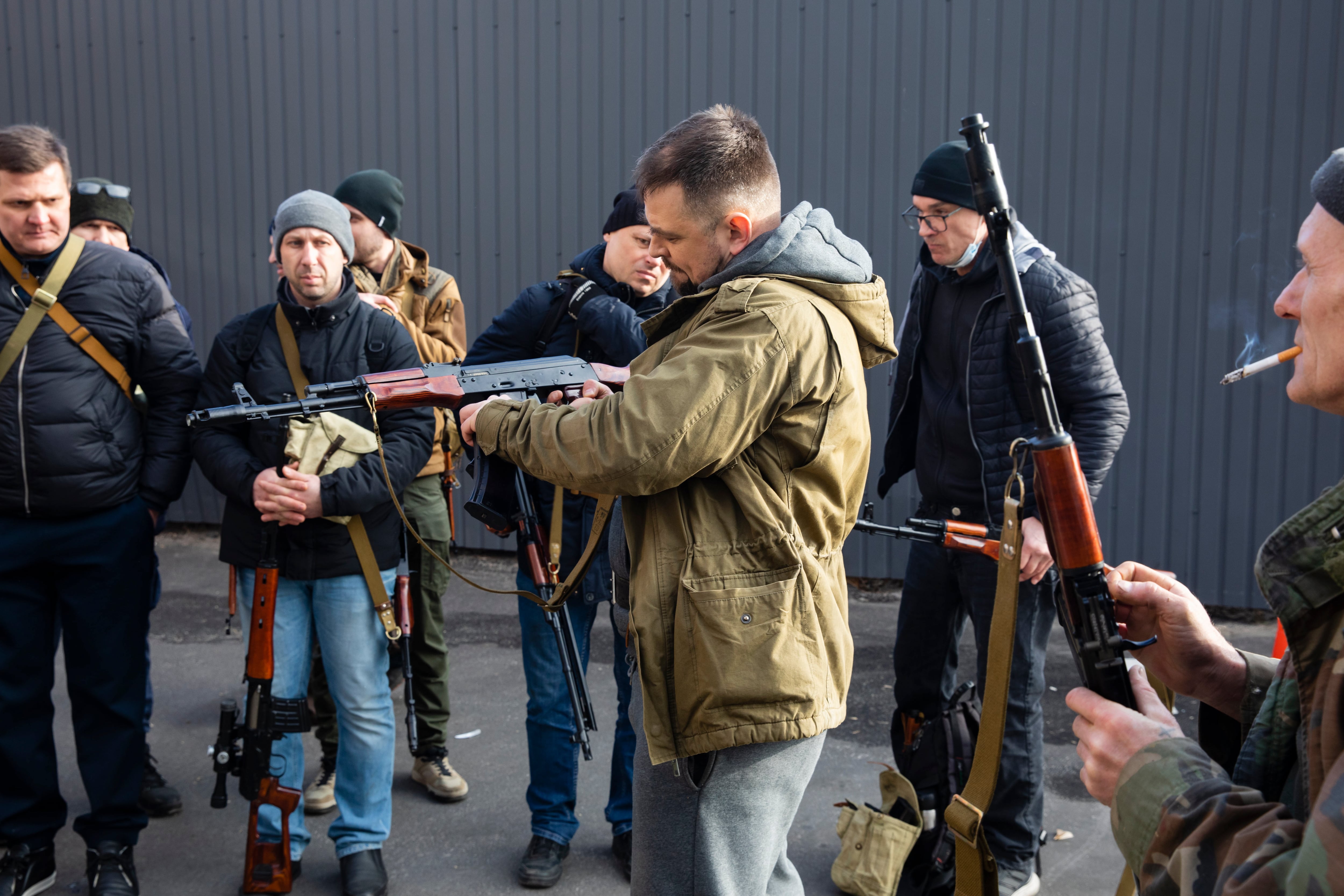
“Every house, every street, every checkpoint, we will fight to the death if necessary,” said Mayor Vitali Klitschko.
In Kharkiv, Ukraine’s second-largest city, with 1.4 million people, heavy shelling slammed into apartment buildings.
“I think it struck the fourth floor under us,” Dmitry Sedorenko said from his Kharkiv hospital bed. “Immediately, everything started burning and falling apart.” When the floor collapsed beneath him, he crawled out through the third story, past the bodies of some of his neighbors.
In the small town of Horenka, where shelling reduced one area to ashes and shards of glass, rescuers and residents picked through the ruins as chickens pecked around them.
“What are they doing?” rescue worker Vasyl Oksak asked of the Russian attackers. “There were two little kids and two elderly people living here. Come in and see what they have done.”
At The Hague, Ukraine pleaded with the International Court of Justice to order a halt to Russia’s invasion, saying Moscow is committing widespread war crimes.
Russia “is resorting to tactics reminiscent of medieval siege warfare, encircling cities, cutting off escape routes and pounding the civilian population with heavy ordnance,” said Jonathan Gimblett, a member of Ukraine’s legal team.
The fighting has sent energy prices surging worldwide and stocks plummeting, and threatens the food supply and livelihoods of people around the globe who rely on crops farmed in the fertile Black Sea region.
The U.N. human rights office reported 406 confirmed civilian deaths but said the real number is much higher.
On Monday, Moscow again announced a series of demands to stop the invasion, including that Ukraine recognize Crimea as part of Russia and recognize the eastern regions controlled by Moscow-supported separatist fighters as independent. It also insisted that Ukraine change its constitution to guarantee it won’t join international bodies like NATO and the EU. Ukraine has already rejected those demands.
Zelenskyy has called for more punitive measures against Russia, including a global boycott of its oil exports, which are key to its economy.
“If (Russia) doesn’t want to abide by civilized rules, then they shouldn’t receive goods and services from civilization,” he said in a video address.
-Yuras Karmanau, The Associated Press.
Associated Press reporters from around the world contributed to this report.




